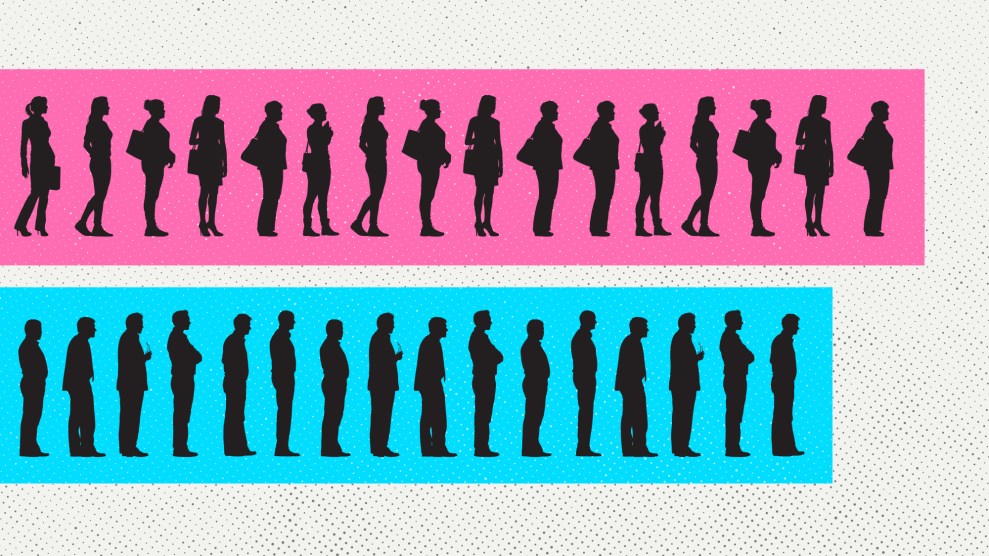
Nevada state Rep. Jacky Rosen celebrates at a Democratic election night party after winning a state Senate seat.John Locher/AP
Nevada is officially the first state in US history with a majority-female legislature. On Tuesday, two women were appointed to open seats in the state Assembly, bringing the total number of women in the Statehouse to 32—just enough to claim a majority in the 63-seat Legislature. Both women are Democrats and are joining a Democratic supermajority in the Assembly. Only 38 percent of Nevada seats were held by women before the midterm election.
As I wrote in August about the push for gender parity in the Nevada Statehouse:
An unprecedented number of women, many of them new to politics, are running for office at all levels of government—from school board member to US senator—this election cycle.
Nowhere is this trend more evident than in Nevada, which is poised to make history in November and have the first female-majority legislature in the nation. Nevada currently ranks third in the nation when it comes to gender parity in its legislature. With a breakdown of 38.1 percent female and 61.9 percent male lawmakers, the state is surpassed only by Arizona and Vermont, according to the Center for American Women and Politics at Rutgers University. (The worst states? Wyoming and Oklahoma, which have only 11.1 percent and 13.4 percent women lawmakers, respectively.) If all goes well at the polls in November, women may soon outnumber men in Carson City—there are 16 women running for reelection in November and 11 others running against incumbent men.
If the Legislature does flip, the so-called blue wave that has swelled in the wake of Trump’s election won’t be entirely to credit. The women running for office in Nevada this November aren’t politically homogenous: Of the 45 total women running, 31 are Democrats and 14 are Republicans. In the six competitive races, two candidates are newcomer Democrats looking to unseat male Republican incumbents, while another is a newcomer Republican running against a male Democrat incumbent in a slightly left-leaning district. Yet another Republican woman is looking to win back a seat she lost to a male Democrat in 2016.
Despite Nevada’s history of women in politics, the women candidates I spoke to for the August story faced an uphill battle, and it was unlikely they would net enough seats to flip the Legislature on Election Day. But after one assemblymember resigned and another vacated his seat following a state Senate appointment, the possibility of women dominating the Capitol became more real.
Women are still woefully underrepresented in state governments. According to the Center for American Women and Politics, only about 25 percent of seats in state legislatures are held by women.













